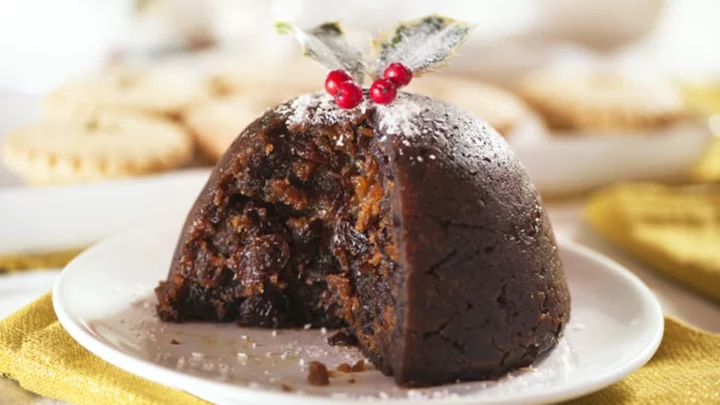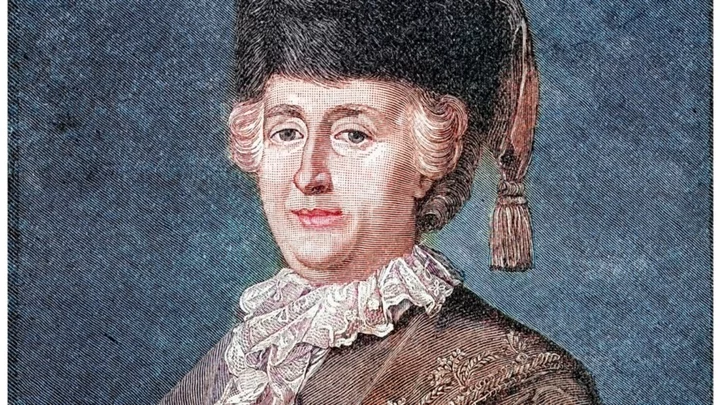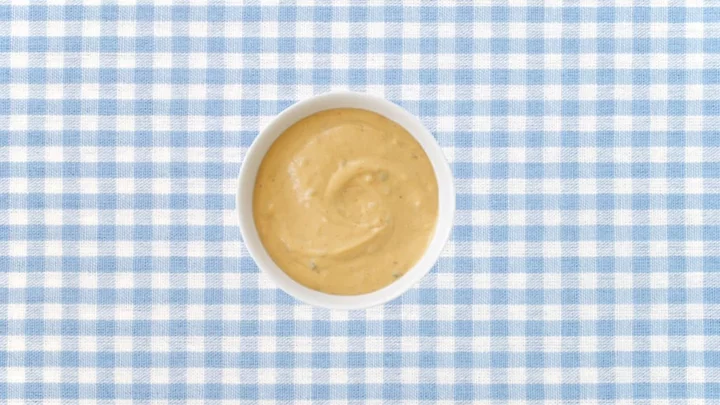When gathered around the table for Christmas in the UK, clearing the last of the dinner plates is a special moment. It means it’s time for the classic dessert: Christmas pudding. Some families dim the lights, and then set the pudding on fire by pouring warm brandy over the top and lighting it with a match. Others stick a coin in it for luck, and some simply grumble that they don’t much like Christmas pudding anyway, and they wish they could have something different this year.
But where did this festive classic come from in the first place, and how did it get so firmly cemented into British Christmas dinner tradition?
The Origins of Christmas Pudding
The dish, which is also known as figgy pudding or plum pudding, dates back to the Middle Ages. It didn’t contain what we call plums today, but might have been made with prunes, currants, and raisins (plum being the generic term for dried fruit). This mixture began life as a kind of pottage, a broth that was thickened with breadcrumbs, known as frumenty and served at the start of a meal.
Just as mince pies—another favorite festive sweet treat in the UK—used to actually contain minced meat, as opposed to the fruity, sugary mix known as “mincemeat” today, Christmas pudding often contained meat or meat stock. As frumenty evolved into more solid form, early puddings would consist of fruits, fat, and spices, mixed with grains and meat, and then be packed into intestines. According to anthropologist Kaori O’Connor, England’s involvement in the global spice trade during the reigns of Queen Mary I and Queen Elizabeth I made some of the pudding’s important ingredients more readily available to English citizens. The pudding became associated with Henry VIII’s famous royal feasts and an age of expansion.
“A Speckled Cannon-Ball”
The meatier, more savory “pudding” still bore little resemblance to what is enjoyed around Christmas dinner tables today. Until the 18th century, sugar was an expensive luxury in the UK. Only after Britain developed sugarcane plantations in the Caribbean—and transported thousands of enslaved Africans to work on them—did sugar become more affordable and Christmas pudding turned sweet. By the early 19th century, cooks combined beef suet with dried fruits and peel, breadcrumbs, and eggs. Next, the rich pudding mixture would be shaped into a ball, wrapped in a pudding cloth (like cheesecloth or muslin), and then boiled.
The addition of liquor for serving it en flambé crops up in the Charles Dickens classic A Christmas Carol, a book that gets some credit for giving the pudding its place as an unmistakably Christmas-y dish in the Victorian era. In the story, Mrs. Cratchit presents a pudding described as “like a speckled cannon ball, so hard and firm, blazing in half of half a quartern of ignited brandy, and bedight with Christmas holly stuck into the top!”
A Royal Recipe
British monarchs and other royal figures have also been linked to the classic dessert. King George I supposedly requested it in 1714 as part of the first Christmas feast of his reign, and Queen Victoria and her husband Prince Albert have been connected to the surviving tradition of placing a coin in the pudding. Originally this would have been a silver sixpence, and the fortunate person to find the coin in their own serving would enjoy luck in the year ahead.
In the 20th century, the pudding’s association with Empire became explicit. Soldiers in World War I were reminded of what they were fighting for when Christmas puddings were included in hampers that were sent to the Western Front in 1914. At home, British households endured food shortages, while more than half of the country’s food supply was imported, mostly from nations outside the British Empire. The unsettled global economy following the war prompted the government and the monarchy to launch a campaign promoting British cuisine and commodities specifically sourced from the Empire.
O’Connor writes that in 1926, King George V and Queen Mary made sure to make it known that their own Christmas dinner would consist entirely of foods produced within the Empire. The king’s chef, André Cédard, created a special Christmas pudding recipe calling for currants from Australia, cut candied peel from South Africa, spices from India or the British West Indies, and even British beer. The Empire Marketing Board made the recipe for Empire Christmas Pudding available to the public, at home and overseas, to encourage purchase of foods from the colonies and steer consumer habits in a patriotic direction. (The Empire Marketing Board also made recommendations for Empire-produced canned salmon and lobster, apples, and honey.)
Traditions Today
The last Sunday before Advent is known as Stir-Up Sunday. While the phrase originally comes from the Book of Common Prayer, it has also become a day when families get together to prepare a Christmas pudding; each family member has a stir of the mixture, which some say leads to luck and unity in the year ahead.
In a nod to modern lifestyles, Christmas puddings no longer need to be boiled in cloth. Many people still committed to making a Christmas pudding from scratch use a pudding basin, a stoneware, metal, or heatproof plastic bowl specially designed for steaming. Some modern Christmas pudding recipes introduce a little more decadence to the classic; for example, Nigella Lawson’s version calls for soaking the dried fruits in Pedro Ximénez, a sweet and dark sherry, and serving with eggnog cream. The sprig of holly for decoration, as used by the fictional Mrs. Cratchit, remains common. And on the big day itself, the excitement of lighting the pudding—and possibly finding the lucky coin—makes for a memorable end to Christmas dinner.
However you decide to make this classic, each rich bite delivers a taste of its cultural and political history.
This article was originally published on www.mentalfloss.com as A Brief History of Christmas Pudding, Britain’s Imperial Dessert.









